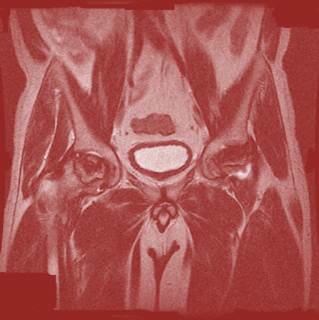Stem Cells for Hip Osteonecrosis-Mexican Style: Ole?
Why are we so finicky about candidacy grading? As you may know, we insist on giving every patient an honest assessment of their candidacy grading-Good, Fair, or Poor. Being a good candidate doesn’t guarantee the procedure will work just like being a poor candidate doesn’t guarantee it will fail. However, given all the patients we’ve treated through the years, the patient has a rough assessment of where they stand. They also know the possible headwinds they may experience. Recently my partner John Schultz performed an evaluation on a patient with ARCO grade 3-4 hip AVN with collapse of the bone, seeking a She was a poor candidate for hip osteonecrosis stem cell treatment of any type because she had a “square peg in a round hole”. This is based not only on our clinical experience going back 6 years and treating more than a hundred severe hip patients, but also based on the published works by Gangji and Hernigou. Dr. Schultz told her she was a poor candidate for our treatment. Believing stem cells were magic (they are not), she called a Mexican outfit with little experience treating hip AVN and was told that their stem cells would likely work. She went to Mexico and had a very painful bone marrow aspiration from her tibia (not a great place to take a marrow aspirate because the bone is very thick and it’s painful). The cells were spun down in the same way that she could have gotten at many clinics in the United States using a bedside centrifuge. They then re-injected the cells into the hip joint without any guidance (blind), so we have no idea where they went. In addition, for AVN, since the main issue is in the bone, injecting cells into the hip joint after the bone has collapsed will do little good – like trying to fix the roof on a house where the structure of the roof has collapsed. However, this was done this way because the technical expertise needed to place cells into the bone is very high. She had intense pain, so the next day they carried her back from her resort hotel to the clinic for a second injection. After paying $8,500, she’s now signed up for a hip replacement after Dr. Schultz again refused to treat her with stem cells because it wouldn’t help her hip. The upshot? Buyer beware. There’s a good reason we’re brutally honest with patients about their prospects, as we’ve usually treated many patients just like them and know what works and what doesn’t. Again, while this doesn’t mean all good candidates get amazing results or all poor candidates get no results, it does mean that we try hard to not take money from patients we have little hope of helping. When we do agree to treat poor candidates, we continually emphasize that we are not optimistic about their prospects. In addition, the basis for the treatment needs to make sense, even if it ultimately fails. For example, not placing cells in the bone to treat a bone disease is a bad idea.
NOTE: All Regenexx procedures are medical procedures and like all medical procedures they have a success and failure rate.

If you have questions or comments about this blog post, please email us at [email protected]
NOTE: This blog post provides general information to help the reader better understand regenerative medicine, musculoskeletal health, and related subjects. All content provided in this blog, website, or any linked materials, including text, graphics, images, patient profiles, outcomes, and information, are not intended and should not be considered or used as a substitute for medical advice, diagnosis, or treatment. Please always consult with a professional and certified healthcare provider to discuss if a treatment is right for you.
